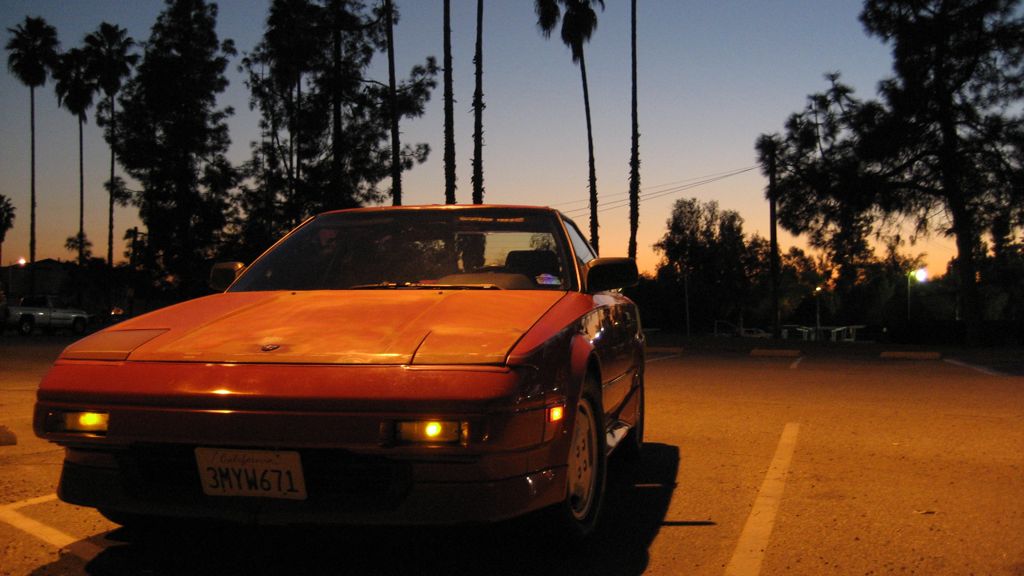Is 55 the Answer?
Posted on May 11, 2006 • 4 minutes • 754 words
What I used:
I used my 1987 Toyota MR2 with a 1600 cc engine. The car weighs approximatly 2500 lbs (1134 kg) and only seats two people. It has 117,000 miles on it and is rear wheel drive.
What I did:
I drove my car for 1 week as I normally would and 1 week never allowing my engine to rev over 3000 rpm. In the 2 weeks of testing I never had cargo in my car, never had a passenger, and never went through a drive through or had excessive idling. Not allowing my engine to go over 3000 rpm held me to a top speed of about 57 mph. It also caused me to accelerate very slowly but I was still able to get up to my destination speed by the time I reached the freeway.
What did it do?
Driving ~57 mph on the freeway and not accelerating over 3000 rpm caused me to get 8 mpg more than I previously was getting on normal driving. For me this was approximately a 28% rise in my fuel efficiency. Over my whole tank of gas I am able to get an extra 80 miles before I have to fill up. This essentially gives me a little more than 2 extra gallons of gas per tank. Because I get the equivalent of more than 2 extra gallons per tank I save (at current gas prices) $9 per tank. I fill up my tank every week so this will cause a yearly savings of about $500.
What were unexpected results?
I first of all did not expect to have such a high gain in my gas mileage. I expected 3-4 mpg more at most. Even with driving slower I never had to leave earlier than usual for work/church/etc. and I was never late (at least not later than usual). Surprisingly I felt more relaxed while driving at 57 mph at all times. I would not get upset when someone was driving slowly in my lane and I did not get competitive when someone passed me (because everyone was passing me). My drive to work was much more entertaining and I was able to relax and think clearly more than I normally would.
For my slow week I passed 5 cars and 1 truck. I also had 1 person honk at me.
What may have interfered with the experiment?
One day (driving normally) I drove with my t-tops off for about 15 miles. This probably caused undesirable wind turbulence and may have affected the gas mileage.
I can not be certain that both times I filled up my tank I filled it with the exact amount of fuel (but it was probably pretty close).
I drove at night for about 60 miles during the slow week. This normally would not affect much but my headlights pop up so it probably caused some drag and may have had an affect on the gas mileage.
Weather was close to the same but I cannot be certain that it was the same and may have had some influence on gas mileage. For those who are familiar to southern California you probably know that the temperature doesn’t change much. I was able to avoid major changes by driving during the same part of the day for both weeks.
What is next?
Because my mileage increased so much and I am used to driving at such a slow speed now I will continue to drive at 57 mph on the freeway. This next week I will test how much of a difference it will make to drive on city roads normally and slow just on the freeway. I may try a couple of other experiments to see if I can get my car up to 40 mpg but for now I am very happy with what I have found.
Lowering the speed limit is defiantly not the answer as far as I’m concerned. A 30% increase on most SUV’s and trucks will still only increase gas mileage to 15-20 mpg. That is still far to low to make a big change in gas prices.
What the world needs is some cheap add-on that will make current internal combustion engines more efficient or run on an alternative fuel. Until that happens the world still has close to 1 billion cars that are running far too inefficient. Even if hybrids start making great sales we still have cars that will be using fuel like they have been for the past 100 years.
